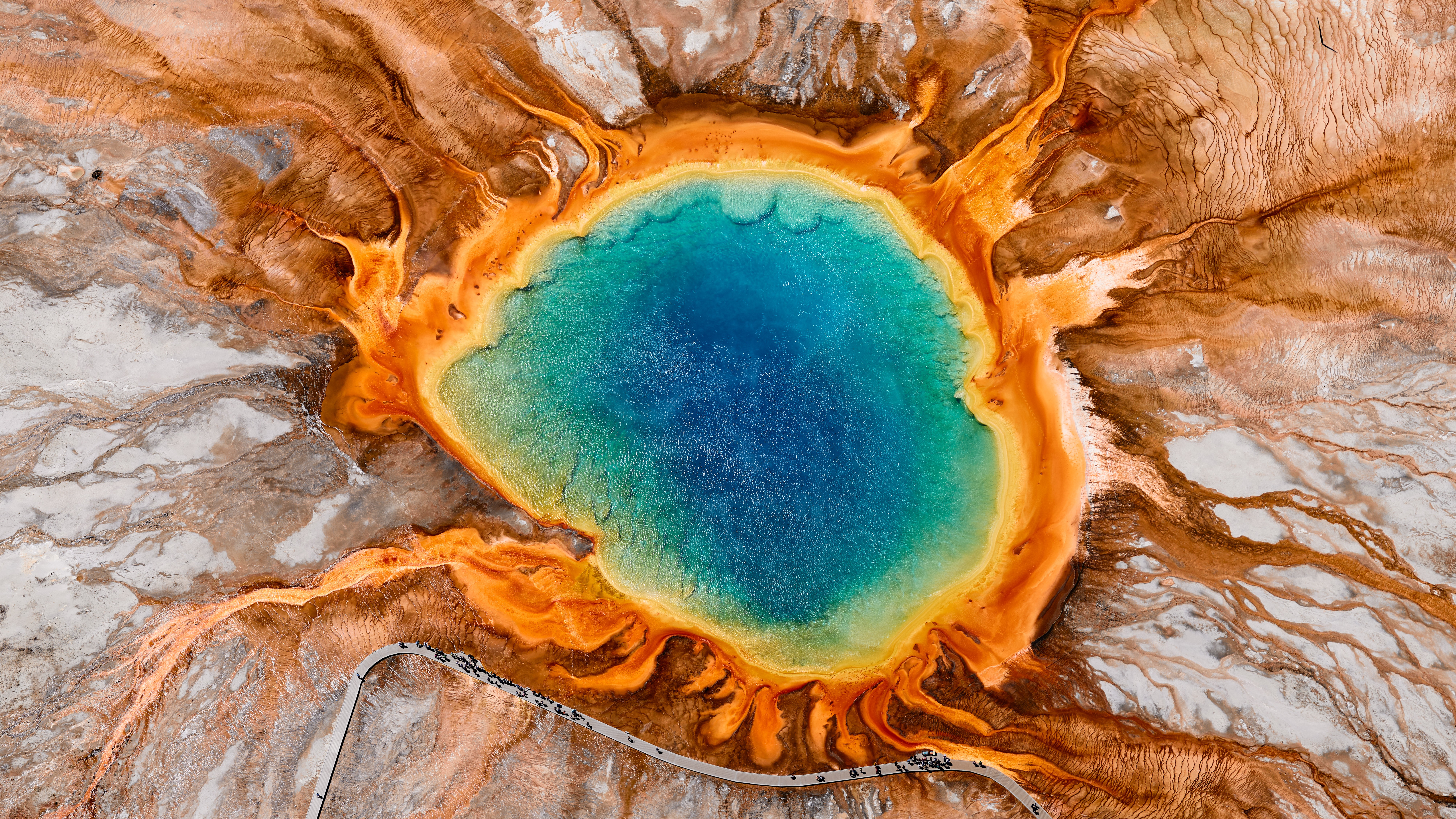A “breathing” cap of magma has been discovered inside the Yellowstone supervolcano, and it might help determine when the volcano will next erupt, a new study has found.
Yellowstone hasn’t had a major eruption for hundreds of thousands of years, but it’s still very much an active system. This newly discovered cap, which is 2.6 miles (3.8 kilometers) below the surface, acts like a lid, according to a recent statement. Not only does this lid trap a significant amount of heat and pressure inside, but it also appears to be porous enough to steadily release some of that pressure, so the whole system doesn’t blow.
Discovering the cap gives researchers a better understanding of where Yellowstone’s magma begins, along with fresh insights into the nature of this ancient volcanic system. The researchers published their findings April 16 in the journal Nature.
“For decades, we’ve known there’s magma beneath Yellowstone, but the exact depth and structure of its upper boundary has been a big question,” study co-author Brandon Schmandt, a professor of earth, environmental and planetary sciences at Rice University, said in the statement. “What we’ve found is that this reservoir hasn’t shut down — it’s been sitting there for a couple million years, but it’s still dynamic.”
Related: We finally know where the Yellowstone volcano will erupt next
Yellowstone is one of the world’s largest volcanic systems. The volcano has blown big on three occasions in the last 2.1 million years — the most recent was 640,000 years ago and covered 2,900 square miles (7,500 square kilometers). Researchers aren’t expecting Yellowstone to erupt again for many thousands of years, and there’s no guarantee it’ll ever have another catastrophic eruption like those in the past. However, volcanic eruptions are difficult to predict, and scientists still have a lot to learn about the Yellowstone system.
Schmandt and his colleagues focused their new research on the northeastern part of the caldera, where previous studies have suggested the next eruption could come. To identify the depth of the top of the magma system, the team used a 53,000-pound (24,000 kilograms) vibroseis truck. These trucks generate tiny earthquakes that send seismic waves into the ground, which then reflect off different layers in the Earth. Researchers then recorded when the reflected waves returned to the surface, according to the statement.
Once they had the depth, the team used computer models to determine that the cap layer was most likely made up of molten minerals and supercritical water bubbles within a porous rock. Bubbles accumulating in a volcanic system can increase pressure and may help trigger eruptions. However, in Yellowstone, the researchers found that the bubbles are rising and then escaping through the porous cap, thus releasing the pressure and lowering the risk of an eruption. Schmandt compared this system to “steady breathing.”
“Although we detected a volatile-rich layer, its bubble and melt contents are below the levels typically associated with imminent eruption,” Schmandt said. “Instead, it looks like the system is efficiently venting gas through cracks and channels between mineral crystals, which makes sense to me given Yellowstone’s abundant hydrothermal features emitting magmatic gases.”
